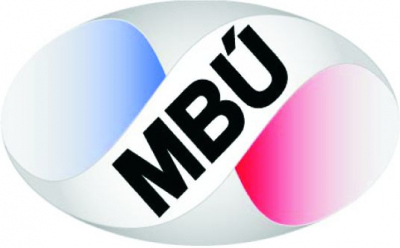NOVEL HYBRID ANTIBIOTICS
Technology description
| The name of the technology: | NOVEL HYBRID ANTIBIOTICS |
|---|---|
| Challenge: | Finding solutions to rising resistance to existing antibiotics becomes of high importance nowadays. There is a constant call for a new-in-class or advanced-in-class antibiotics with the potential to improve this global situation. We developed and partially tested two new hybrid lincosamide compounds, which could have such potential. |
| Description: |
Lincosamides are ribosome targeting antibiotics of high clinical relevance. Natural compound lincomycin is recently used mainly in veterinary medicine while its chlorinated derivative clindamycin, is listed by WHO as one of the key access antibiotics, the essential medicines, which should be available, affordable and quality-assured worldwide. Typically, it is used against infections caused by G+ staphylococci and streptococci, including methicillin-resistant Staphylococcus aureus (MRSA), one of four most relevant clinical indications, owing to the prevalence and severity of these conditions globally. However, increasing incidence of MRSA strains with associated macrolide-lincosamide-streptogramin (MLS) cross-resistance becomes a limiting factor to use clindamycin against MRSA. Due to the excellent tissue (including bone) penetration of clindamycin, it is the first choice drug to treat bone and teeth infections and also deep abdominal infections and some anaerobic infections (G+ or G-). However, inefficacy of lincosamides (as well as many other antibiotics) could result in pseudomembranous colitis, the serious risk factor of antibiotic treatment. In combination with quinine or quinolones, clindamycin is also used to treat malaria. Due to low toxicity, the combination quinine/clindamycin is recommended by WHO as the first choice drug for pregnant women and compromised patients in general. Among other parasites also Toxoplasma and Bobesia could be treated by clindamycin. We developed and partially tested two new hybrid lincosamide compounds: The first one, ODCELIN is a hybrid molecule of two natural lincosamides, lincomycin and celesticetin and thus can be produced directly by modified microorganism, the second one Cl-ODCELIN is its chlorinated derivative. Preliminary tests indicated, that the both new compounds aspire to be superior drugs, if compared to their industrially used analogs: ODCELIN over lincomycin and Cl-ODCELIN over clindamycin. Most importantly, however, they represent a patented scaffold ready for further improvement and trigger to be investment attractive agents. Advantages over existing solutions • In terms of MIC for S. aureus including MRSA, Staphylococcus epidermidis, S. haemolyticus or enterococci, ODCELIN is superior to lincomycin and Cl-ODCELIN is superior to clindamycin. • >10x improved activity even for strains with ermC (MLS) resistance determinant. • 7 of 8 tested clindamycin resistant strains of Clostridium difficile are sensitive to Cl-ODCELIN (prevailing MICs even below 0.25 µg/ml). • The chemical and/or biological synthesis of the ODCELIN and Cl-ODCELIN available. • The engineered microorganism producer of the core compound is currently under construction. • The engineered microorganism producer of the core compound is currently under construction. |
| Commercial opportunity: |
Co-development / collaboration: We offer the opportunity to exploit the patented lincosamide scaffold for further development to obtain the antibiotic able to overcome resistance caused by methylation of a ribosomal target. Investment /licensing: 1) We offer relatively cheap way how to gain more efficient compounds ODCELIN and Cl-ODCELIN when compared to currently available lincomycin and clindamycin, repectively. ODCELIN could be produced in the same cost-efficient manner as lincomycin, i.e. from the fermentation broth of genetically engineered producing microorganism and Cl-ODCELIN by its chlorination. Alternatively, they can be synthesized chemically from generic compound lincomycin. 2) A chance to develop the antibiotic overcoming resistance mechanisms: It represents a platform for further improvement at the patented hotspot as well as at two other already published hotspots of the molecule. Just the combination of patented modification with some already known seems to be promising to overcome resistance caused by methylation of ribosomal target. The product could reach the market size in human medicine ~150 mil. USD/year just in USA (600 mil. USD/year in total considering that USA covers 25% of the world market). At least the same size of market is further represented by veterinary medicine. (Estimated based on current market size for clindamycin and lincomycin) |
| IP protection status: | Protected by WO2018161979 (A1) (EU and US); CZ307305 (B6), granted 11.04.2018; priority 10.03.2017 |
| Development status: |
Phase 2Corresponds with TRL 3 and TRL 4 Feasibility study. There is a realistic design of the technology and the initial tests in the laboratory are leading to the specification of the technology requirements and its capabilities.
|
| Partnering strategy: | Co-development Collaboration investment licensing |
| More information: | Elucidation of salicylate attachment in celesticetin biosynthesis opens the door to create a library of more efficient hybrid lincosamide antibiotics. Kadlcik S, Kamenik Z, Vasek D, Nedved M, Janata J. Chem Sci. 2017 May 1;8(5):3349-3355 |
| Images: | No picture inserted |
| Categories: | Pharma Life Science and Health Chemistry |
| Owner of a technology: | Institute of Microbiology of the CAS, v.v.i. |
